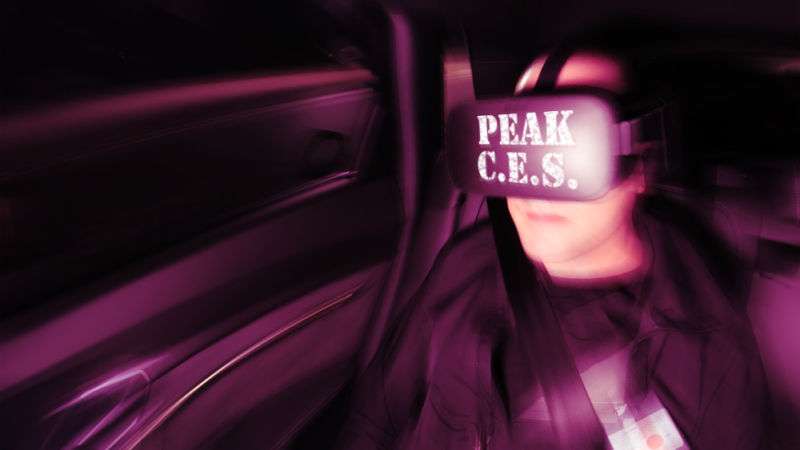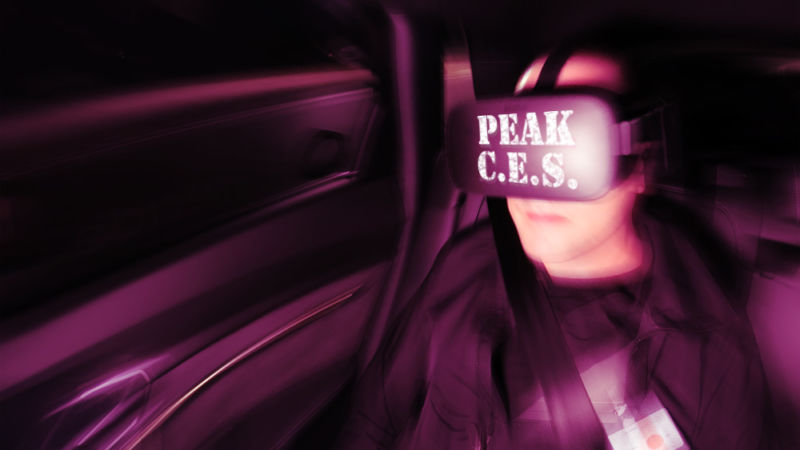
VR headsets, augmented windshields, and multiscreen infotainment at CES

Enlarge / Yes, I am wearing VR in the backseat of an electric car. Yes, this is Peak CES. (credit: Aurich Lawson)
LAS VEGAS—I’d been on the ground for less than twelve hours before I strapped on the virtual reality headset. It was only 8pm but felt far later thanks to time zones and air travel. I had already been chauffeured about that afternoon by a self-driving car, and here I was sitting in the back seat of an Audi e-tron at a race track a little south of the city. I’d already reached Peak CES, yet the show wouldn’t even officially start for another 36 hours.
We were at Speedvegas for a rather exclusive look at Holoride, which Audi thinks is the next big breakthrough in in-car entertainment. According to the company—which has spun Holoride as an independent startup—it’s a “radically new way to entertain backseat passengers in a brand new way.” The idea is deceptively simple: you take telematics info from the car in real-time and use it to construct artificial environments in VR. Or, to put it another way, imagine you’re flying in a spaceship, and every time the car accelerates, brakes, or turns, your spaceship accelerates, brakes, or turns as well.
I know what you’re thinking: “wearing VR in the back of a car is going to make me carsick!” Holoride’s magic formula has been to better match the car’s motion to what happens in VR. That means less conflict between the messages from your eyes and your vestibular system, which means less motion sickness. (Now, only 27 percent of users will experience severe nausea, down from more than one in two before Holoride worked out its digital magic. And 53 percent experience no nausea at all.)
Read 9 remaining paragraphs | Comments




